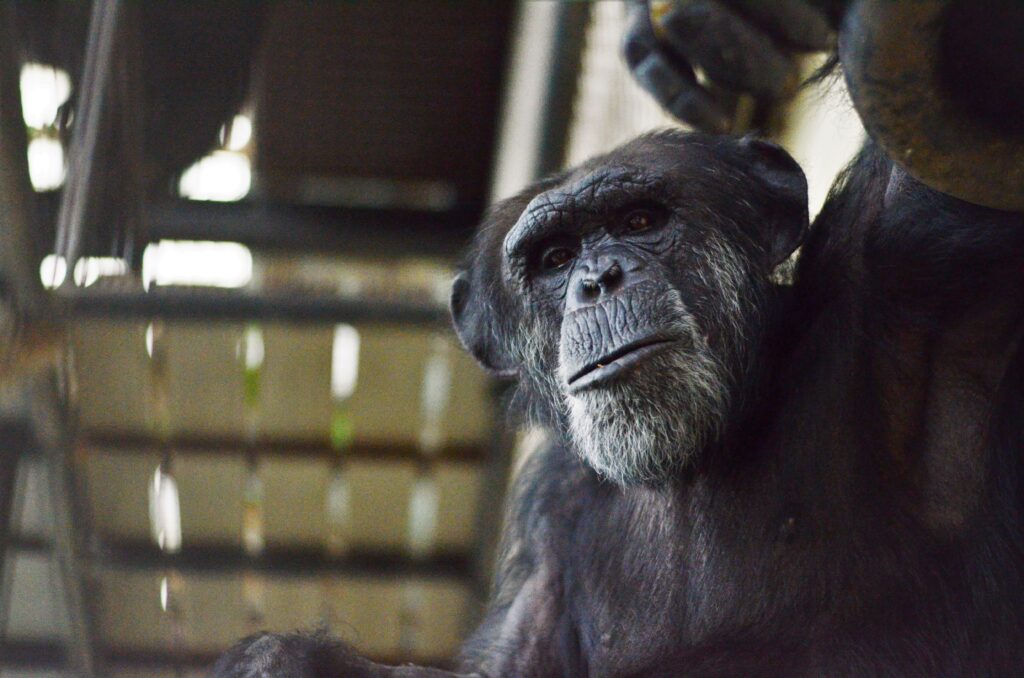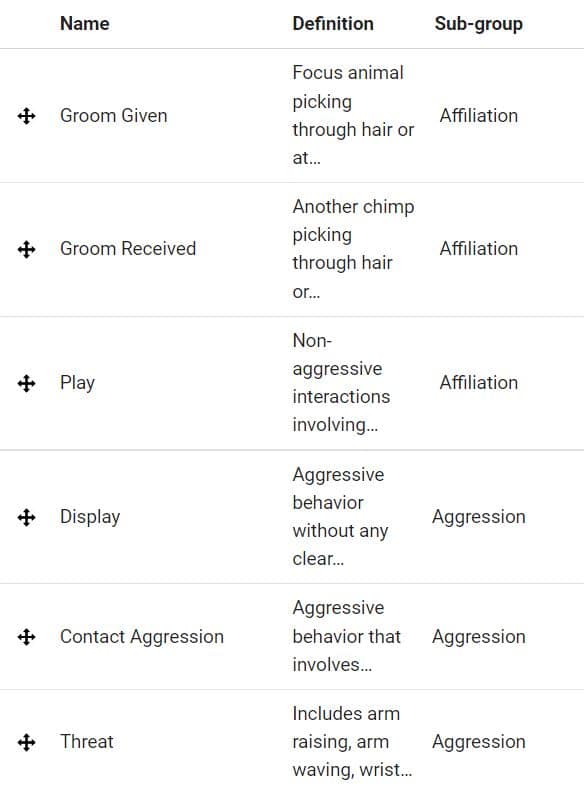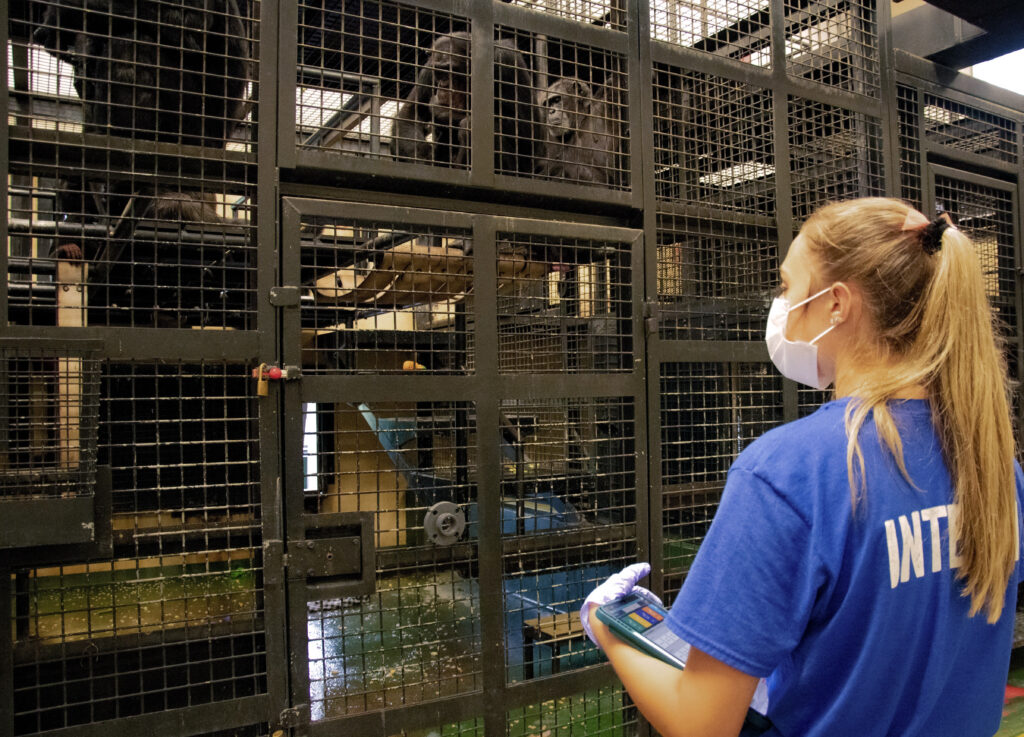
Chimps Ahoy: Hierarchy and Roles – Part 1 of 3

By Devyn Schaefer
Chimpanzees are complex. Their social group dynamics thrive off the strength of their interconnecting web of relationships known as hierarchy. At Project Chimps, caregivers use three “levels” of hierarchy to help them discuss such a dynamic web: high-ranking, mid-ranking, and low-ranking.
Understanding Hierarchy
Hierarchy is based on how dominant a chimp is and how well their relationships are with each chimp. A high-ranking chimp can be more aggressive and/or supported by many chimps. A low-ranking chimp can be more submissive and/or not have as many strong relationships with chimps as others do. As you can probably guess, a mid-ranking chimp is somewhere in between.
Primate researchers study chimpanzee politics for years to understand it. I, a behavior intern, only had 12 weeks to study such a complex hierarchy! I learned a lot, but I only scratched the surface of it. I spent a lot of my time in the Chimps Ahoy Villa that houses 17 former research lab chimps of the current 99 residents. The chimps involved in this villa currently are Kirk, Rocko, Luke, Rusty, Justin, Greg, Maverick, Lindsey, Rosemary, Kassie, Anna, Tabby, Roxy, Kyrstin, Moonie, Mandy, and Arielle.
The Leaders
At this time, Kirk is the alpha male of the group and Lindsey is the alpha female. The alpha is the highest ranking in hierarchy and supported by most chimps in their group. When a fight breaks out, chimps will usually look to the alpha for support or will quickly stop the fight when the alpha gets involved. Alphas are the most dominant, but not necessarily the most aggressive. Alphas can be intimidating, yet are empathetic and generous. Chimpanzee groups are male-dominated, but females choose their male alpha.

Armond, the enforcer of the group, passed away not too long before I arrived for my internship. His passing resulted in hierarchy shifts and a need for a chimp to take on the role that Armond did so well. Enforcers are second in hierarchy next to the alpha. The role of enforcer is to break up fights without having to get the alpha involved. Enforcers are good to have in a group because this chimp is at a high enough ranking to have respect but at a “low” enough rank to be okay if respect is lost when they break up a fight—something the alpha does not want to risk.
During my internship, it was a personal goal of mine to understand chimp hierarchy but the overall goal was to figure out who would step up to become enforcer in the Chimps Ahoy group!
My Observations
I used the ZooMonitor program to record my observations on the chimps’ behaviors. Before I began observing Chimps Ahoy, first I made an ethogram consisting of 46 behaviors separated into five subgroups: Affiliation, Aggression, Submission, Abnormal, and Sexual. These behaviors are broken down further. For example, the Affiliation subgroup has 14 behaviors associated with friendly actions (e.g., Give Groom, Receive Groom, Play, Embrace, etc.).

After making the ethogram, I spent every week day, for five weeks, at Chimps Ahoy as the caregivers fed the chimps breakfast and cleaned their rooms in the mornings and later gave them dinner in the afternoons. In total, I observed about 97 hours’ worth of interesting behaviors among the 17 chimps.
It was recommended that I focus on three chimps that are higher in the hierarchy for the purpose of understanding who might take the role of enforcer. Which is exactly what I did!

I mainly followed and observed Kirk, Justin, and Rocko while also making observations on the other chimps who were in the same areas as them. For example, if Kirk, Justin, and/or Rocko were on left porch, I was able to observe all the chimps in the left and right porches. If Kirk, Justin, and/or Rocko were in any of the three bedrooms, I was able to observe all the chimps in all of the bedrooms. However, if I was observing chimps out on the porches, I could not observe chimps in the bedroom (and vice versa).
Want to know more about the politics at Chimps Ahoy? Click on Part 2 to read more about their hierarchy!

